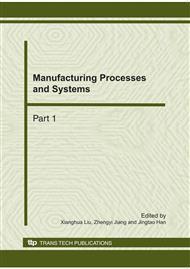p.40
p.47
p.53
p.58
p.71
p.75
p.80
p.84
p.92
An Approach Based on the Classical Free-Electron Theory to Study Electroplastic Effect
Abstract:
Based on the classical free-electron theory, the mechanism of electroplastic effect is studied at a microscopic level. A method is presented for calculating the amount of metal’s flow stress for electroplastic effect. This calculation method takes into account the free electrons exchange energy with metallic ions with a current pulse applied and considers the energy cause the change of the dislocation Gibbs free energy of activation. The results indicate that the metal’s flow stress drop associates with an enhanced plastic strain rate. At last, the effects of current parameters and microscopic parameters on the metal’s flow stress for electroplastic effect are discussed.
Info:
Periodical:
Pages:
71-74
Citation:
Online since:
October 2010
Authors:
Price:
Сopyright:
© 2011 Trans Tech Publications Ltd. All Rights Reserved
Share:
Citation:


